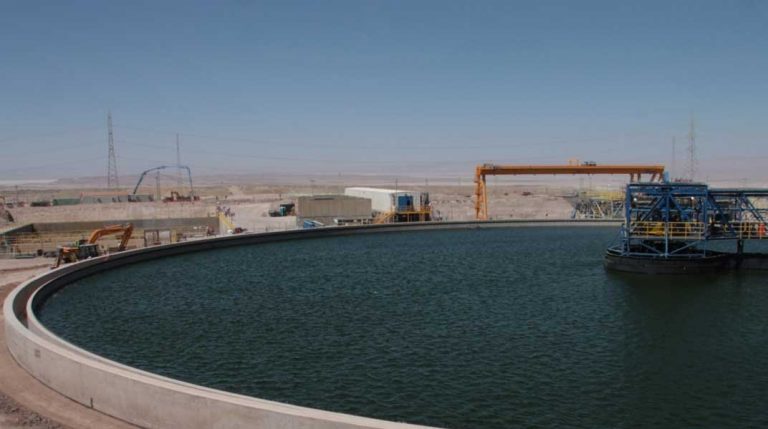The Chamber of Mines of Peru promotes the proper use of water for optimal and sustainable mining activities.

Responsible water management by mining companies contributes to reducing their impact on water balance of the regions.
Water balance can be understood as the balance between all the water resources that enter or leave a given area in a given period of time. Mining activity generally alters or modifies the natural hydrological system because it affects surface water and groundwater.
The influence of mining activity on the natural state of water is quite considerable, since something as vital for the development of extractive projects, such as the development of safety procedures, influences the natural hydrological cycle.
Likewise, we can mention works such as the diversion of riverbeds, siphons, presence of drainage channels, pumping wells, execution of galleries, etc., which end up altering the natural state of the water resource in terms of quantity.
Likewise, the extractive activity materializes in contamination processes, which can cloud waters if the pertinent measures are not taken.
Among other elements that end up altering the natural hydrological cycle, we can mention containment works such as dams, ponds and reservoirs, as well as artificial recharge works, waste generation, processing of polluting effluents and the presence of treated effluents.
Responsible water management allows for a better development of the mining activity. This is mentioned by the specialist of the Chamber of Mines of Peru, Roberto Poncela, who said, «mining activity uses water for ore processing, dust suppression, sludge transport and to cover the needs of the mining camps. In most operations, water is obtained from underground, streams, rivers and lakes. However, mines are often located in areas where water is scarce and this causes local communities to oppose the development of the projects.»
The development of mining activity influences both surface water and groundwater. Among these changes, we can mention in the first place water quality decrease. In other words, water resource is not suitable for human consumption.
The second effect is ecological damage. For example, in underground mining, water has to be pumped out of the deposit. Therefore, it can reduce groundwater levels and generate damage to the surface or cause contamination of rivers and species living in those waters.
Thirdly, we can refer to the deterioration of the landscape. Landscape restoration of the affected areas must include each one of the elements of the environment and water in particular.
For all these reasons, the Chamber of Mines of Peru encourages responsible water management in mining processes. Mining companies should be aware of the need to optimize water resource management in the development of their operations.
The negative influence of mining on the natural state of water resource has led to a growing awareness of the need to ensure maximum water sustainability in the industry. This led to several mining projects being affected. For example, in 2013, companies such as Barrick Gold, saw how their investors pulled out due to problems related to water management; as well as because of significant environmental drawbacks.
To avoid situations like these, the mining industry has developed strategies to be more responsible in the management of water resource. That is, to reduce water loss and recycle water as much as possible. Regarding this, we can mention Los Pelambres (Chile) of Antofagasta Minerals, which thanks to awareness and established measures, in 2014, managed to recirculate 85% of the water used in its processes.
The efforts made by mining companies to reduce the influence they have on the quality and quantity of water contribute to optimizing the water balance of the regions where they operate, which guarantees water for the population and also for the continuity of the extractive business.